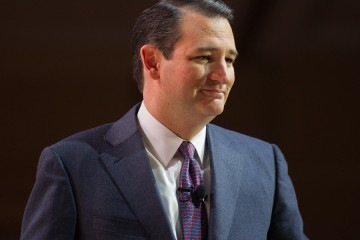Bloomberg Business: Why the Global Economy Has Become a Rorschach Test: Mark Gilbert
©2015 Bloomberg View
NLZUGB6S9728
(Bloomberg View) — After more than half a decade of inactivity on interest rates, the U.S. Federal Reserve believes economic conditions have improved enough that it can raise borrowing costs. The only question is when, rather than if, to move.
Central bankers in the U.K, by contrast, are suggesting they could raise, or lower, or leave their key rate unchanged from the 0.5 percent level that’s also prevailed for the past five years. Their lack of certainty should make the Fed less gung-ho in its rush to escape the so-called zero bound. Andy Haldane, the chief economist at the U.K. central bank (and the smartest guy in whatever room he finds himself in), argued in a speech earlier this month that there’s a case to be made for cutting the key Bank of England rate: I do not currently see an immediate case for a policy change in either direction. If one were required, given the asymmetry of inflation risks, I think the chances of a rate rise or cut are broadly evenly balanced. In other words, my view would be that policy may need to move off either foot in the immediate period ahead, depending on which way risks break.
He went on to argue that an algorithm designed to minimize how far inflation deviates from the 2 percent target and how much growth strays from its trend would probably cut rates if it took guidance from the Bank of England’s forecasting models. Dropping rates from the current 0.5 percent to zero for about a year would help drive inflation back to target quicker than current policy. “A case can be made for policy easing today,” Haldane said. Not all of his colleagues agree. Re-reading the minutes of the central bank’s February 4-5 monetary policy meeting lays bare the developing fissure:
All Committee members agreed that it was appropriate to leave the stance of monetary policy unchanged at this meeting. For two members, the immediate policy decision remained finely balanced: given the outlook for inflation beyond the short term, there could well be a case for an increase in Bank Rate later in the year. All members viewed it as more likely than not that Bank Rate would increase over the next three years; for one member, the next change in the stance of monetary policy was roughly as likely to be a loosening as a tightening.
You have to go back to May 2006 to find this kind of three- way split on U.K.interest rates. Then, six members voted for unchanged policy, with Stephen Nickel at his final meeting as a policymaker casting a sixth consecutive solo vote for a reduction, and David Walton calling for an increase. (Two months later, the panel sanctioned higher borrowing costs.)
In the coming months, Haldane may act on his analysis and vote to lower rates. Martin Weale and/or Ian McCafferty, both of whom wanted higher borrowing costs at five consecutive meetings before rejoining the consensus for stasis at the last three decisions, may revert to calling for an increase. With their colleagues likely to continue standing pat, the first three-way division in nine years has become a possibility. That matters. The global economy is unusually fragile at present, with complications including the threat of deflation, negative bond yields and central bank rates in many countries, and a puzzling absence of wage growth in both the U.S. and U.K. Both Ray Dalio and Jeffrey Gundlach, two of the world’s leading investors, have warned that the Fed shouldn’t be in too much of a hurry to achieve so-called policy normalization. They’re right. And if the Bank of England’s soothsayers, all looking at the same economic evidence, see three different monetary-policy prescriptions, policy makers everywhere should take that as a warning to be even more careful than usual.
To contact the author on this story: Mark Gilbert at magilbert@bloomberg.net To contact the editor on this story: Cameron Abadi at cabadi2@bloomberg.net
For more columns from Bloomberg View, visit http://www.bloomberg.com/view







No Comment